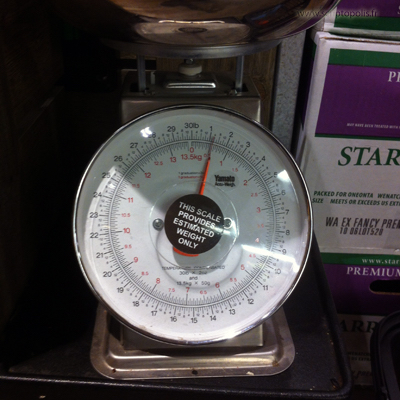Estimation
Denver, november 2015.
The role of measurements is key in a wide range of situations. In the scientific practice, a tool as simple as a scale is regularly used to weigh a known substance in the course of an experiment. It can also be used to obtain information about a new compound. While in the former the scale is handled as a mere daily partner, in the latter, it is considered as a crucial device to translate matter into signs or figures and thus producing significant traces of a new scientific fact. In everyday life, scales are similarly part of numerous mundane practices, to weigth babies during their growth, employees having a medical exam, several ingredients in a cooking recipe, luggages before boarding a plane, or fruits and vegetables in the supermarket. Whatever the situation and the role it is supposed to play, any scale is generally mobilized for its reliability. So, what are we supposed to understand with this rough measurement device? The scale is still working, as the sticker reads: it provides weights and the measurements are considered sufficiently helpful, the estimated weight being closed to the ones of a calibrated brand new scale. In this regard, neither the scale will switch to the out of order category, nor it will be scrapped. On the contrary, equipped with such a inscription, the scale perfectly works in the eyes of the manager of this supermarket. Far from being a positivist person, (s)he assumes any measurement does not directly reflect the reality, but provides rough estimates (about the weight and the relative price) anyone can rely on to act. In the middle of the fruit shelves, this scale does stand more as a decision making device than as a scientific tool. As if taking measures would be a political gesture…







